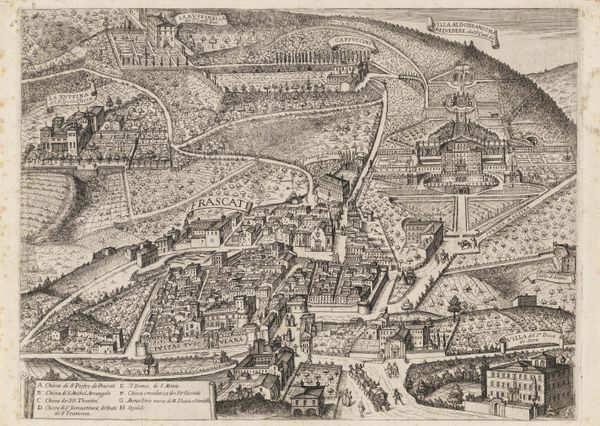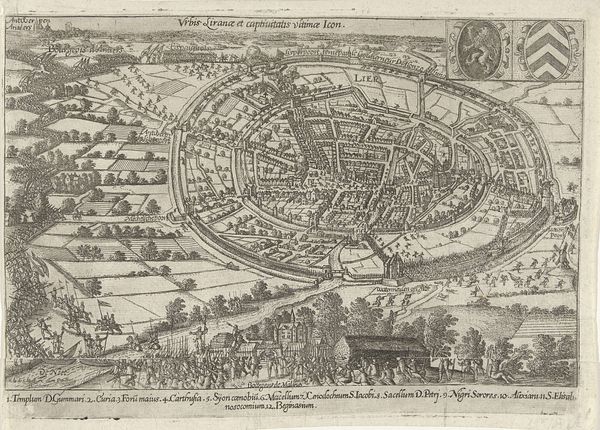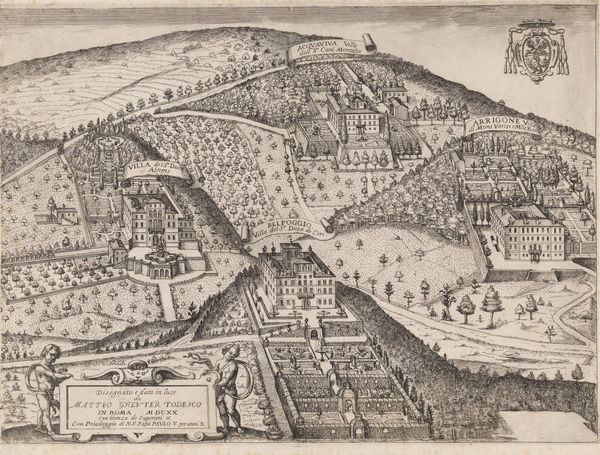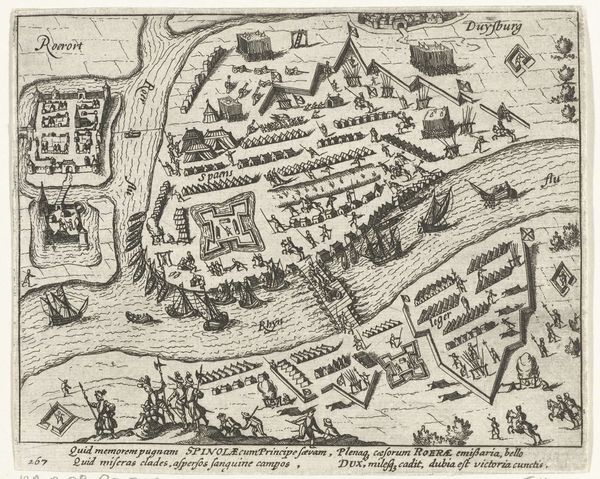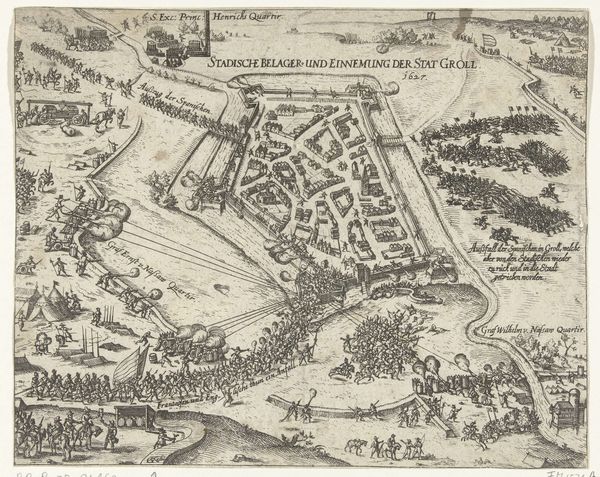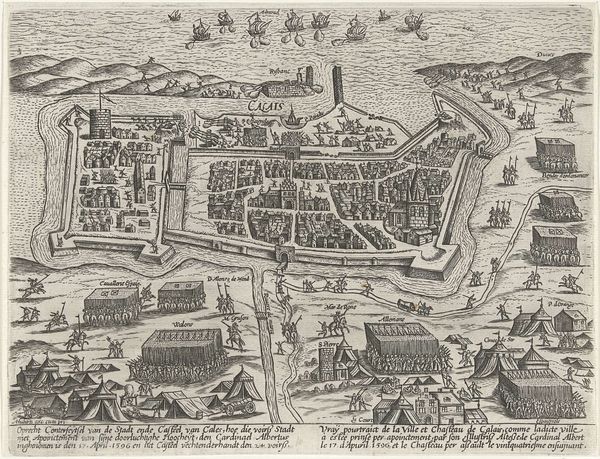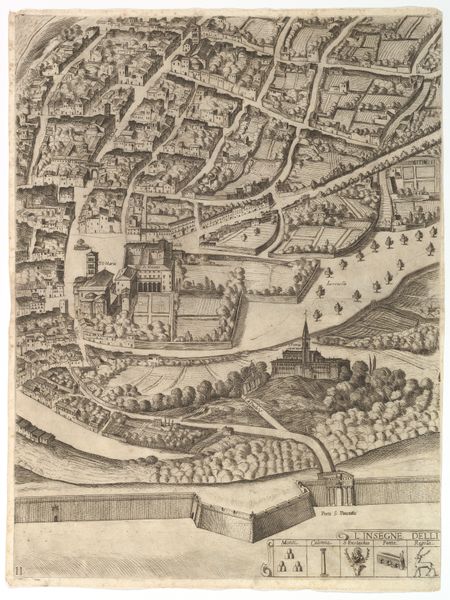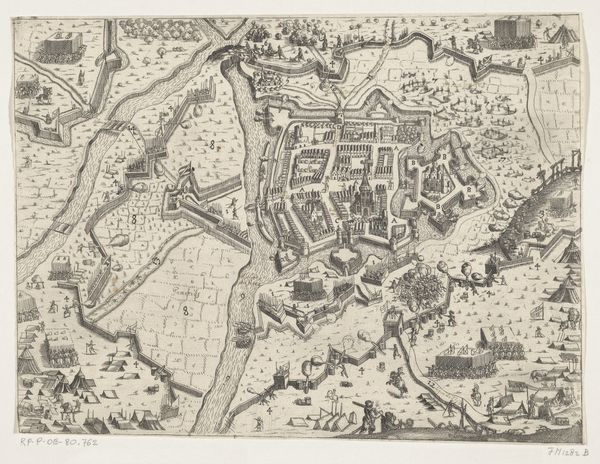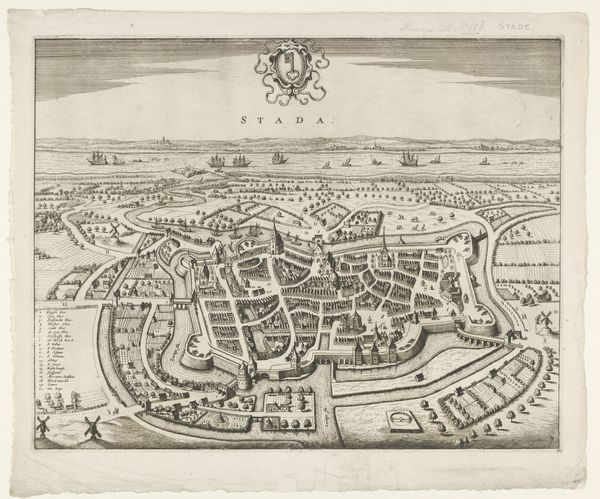
print, engraving
#
medieval
#
dutch-golden-age
# print
#
cityscape
#
history-painting
#
engraving
Dimensions: height 270 mm, width 399 mm
Copyright: Rijks Museum: Open Domain
Curator: "Het beleg van Haarlem, 1572-1573," an engraving created by Antonio Lafreri, immortalizes the harrowing siege of Haarlem. It's a historical rendering meticulously depicting the city and the surrounding military encampments. Editor: Immediately, the stark detail overwhelms me. There’s a striking contrast between the dense, enclosed city and the sprawling, active besieging forces outside. It looks incredibly intricate, almost like a meticulously woven textile. I'm thinking about how the production of prints and engravings like this impacted the perception of war back then. Curator: That visual dichotomy speaks volumes. This print served not only as a record, but also as propaganda. It represents Dutch resistance, embodying resilience amidst immense adversity during their revolt against Spanish rule. What meanings do you infer from this distribution of forms? Editor: Seeing how minutely crafted all of these aspects are I can't help but wonder, about the material realities of its creation. Imagine the labor, the precision required to transfer such detail onto a printing plate, the mass production implications... What kind of paper was used and how readily was it available? How widely were these images distributed, and to whom? This informs not only its visual impact, but also reveals aspects about the culture and social classes of that period. Curator: Absolutely, the dissemination is crucial. Prints like this provided a visual narrative to a largely illiterate populace. By illustrating the Dutch struggle, the prints shaped collective memory, solidifying a sense of national identity and resistance against oppression. In what ways does this tangible representation help you contemplate about agency? Editor: Thinking about the physicality of printmaking – the paper, the ink, the press itself, transforms my understanding of “agency”. These were materials readily available and reproducible. The making becomes inherently linked with accessibility and dissemination, suggesting the resistance came in many tangible forms. The image, replicated again and again, contributed to that larger fight against empire. It reminds me of posters being mass-produced for social campaigns even now! Curator: Your emphasis on the process unveils the inherent relationship between artistic creation and its function within society. Looking closer, this meticulous rendition provides an aerial perspective, an all-encompassing scope that makes one critically think about the spatial strategies enacted through control, power, and war. What a powerful object lesson that invites both reflection on historical agency, on modes of creative circulation, and material impact. Editor: Indeed, understanding the engraving's materiality and means of production truly reframes our perspective. Instead of merely admiring it as an historical artifact, we start appreciating its critical role in the formation and manipulation of Dutch identity in times of turmoil.
Comments
No comments
Be the first to comment and join the conversation on the ultimate creative platform.
